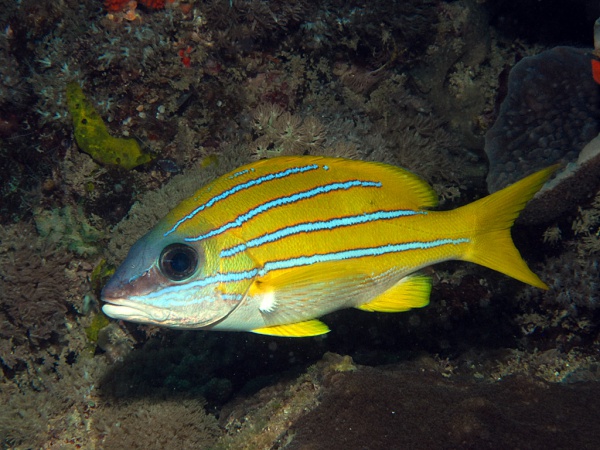Facts About Bluestripe snapper
The bluestripe snapper, also known as the bluestripe sea perch or blue-line snapper, is a vibrant and fascinating fish native to the Indian Ocean and the central Pacific Ocean. This species is not only popular among game fish enthusiasts but is also a sought-after addition to aquariums due to its striking appearance. It is easily recognizable by its bright yellow back and sides, adorned with blue stripes, and yellow fins.
These snappers inhabit coral reefs, ranging from Egypt to Australia and various Pacific islands. They can be found in shallow lagoons and on the outer slopes of reefs, sometimes at depths of up to 180 meters. During the day, they often congregate in groups around coral formations, caves, or shipwrecks.
Interestingly, the bluestripe snapper has a mimicry relationship with the goatfish. The goatfish's coloration mimics that of the snapper, providing both species with protection from predators. The bluestripe snapper's diet is quite varied, consisting of different marine organisms, and it changes based on the fish's age and location.
These snappers reach sexual maturity when they are about 20 to 25 cm long and can spawn year-round, especially in tropical regions. In Hawaii, there has been some concern that the bluestripe snapper might outcompete native fish species, but so far, there is no solid scientific evidence to support these concerns. Because they are not highly valued in the market, efforts have been made to reduce their numbers in Hawaiian waters through spearfishing contests.
Fishermen typically catch bluestripe snappers using handlines, traps, and gill nets. They are sold fresh in many countries and are a key catch in Hawaii's handline fishery. Despite their abundance, their low market value means they have not become a major commercial fish.

 Timor Leste
Timor Leste